Viewing: Blog Posts Tagged with: Continent, Most Recent at Top [Help]
Results 1 - 8 of 8
Blog: An Awfully Big Blog Adventure (Login to Add to MyJacketFlap)
JacketFlap tags: Edinburgh, William Morris, weaving, tapestries, Dovecot Studio, delayed gratification, new ways of telling, Jean Lurcat, Burleigh Map of Tudor Shrewsbury, Add a tag
Blog: Emily Smith Pearce (Login to Add to MyJacketFlap)
JacketFlap tags: Crafts, weaving, yarn, fiber art, Kid Crafts, loom, Fiber Arts, Add a tag
 I first read about these looms in an issue of Craft magazine, back in the good ol’ days when they still had a print edition. With the article, there was a pattern to make your own loom with cardboard, and although I’m sure that works fine, it wasn’t until I found out the author of the article was making hard plastic looms for sale on etsy that I decided I had to try it. Oops! Looks like his store is currently closed, but hopefully he is just on vacation or something.
I first read about these looms in an issue of Craft magazine, back in the good ol’ days when they still had a print edition. With the article, there was a pattern to make your own loom with cardboard, and although I’m sure that works fine, it wasn’t until I found out the author of the article was making hard plastic looms for sale on etsy that I decided I had to try it. Oops! Looks like his store is currently closed, but hopefully he is just on vacation or something.
I got the loom for Christmas and tried it out a few weeks ago using some wool sock yarn I found at the thrift store for 2 euros. Score! Actually, I think it was like 1 euro 60 because they were having a funny promotion where you had to roll the dice to see if you could get a discount. I did. Yay me!
Anyway, the video the loom maker (Travis Meinolf) provides on youtube is very helpful, though I found doing the setup to be a little trickier than I thought it would be. I guess practice will make it easier. I also had grand ideas of the weaving being so fast—like, faster than my snail-like knitting—but because I chose such a skinny yarn, it hasn’t been all that fast.
The good news is, the weaving itself is pretty fun, and the kids and even my husband had to get in on the action. I’ll admit the kids’ weaving isn’t as neat as I might like, but they had a good time, and the labor was free.
The edges, as you see, are pretty uneven. I’m not sure if this is something I would get better at with practice, or if I should just view it as charming and deal with it. Or, another option, to cover it with some kind of (silk?) bias binding, like the professional weaver downstairs does with her gorgeous blankets.
I love this shot of Cinderella (below) at the loom. It’s somehow totally right for Cinderella to be weaving, don’t you think? People in fairy tales do stuff like that.
Next we’ll be spinning wool and warning against pricking fingers on spindles.
I seem to be stuck in an almost-finished project mode. The Haiku sweater is done except for blocking. A dress like this is almost done, but I’m so frustrated that it’s not turning out the way I want it to.
Meanwhile, I’ve been writing and researching on my book projects. I’m reading another great writing book called
Blog: Claudsy's Blog (Login to Add to MyJacketFlap)
JacketFlap tags: Writer, writing, Project, Arts, Writing and Poetry, Spinning, Weaving, Textile, Writer Resources, Persian carpet, Add a tag
Writers come in many different types, but they all form components of two categories; spinners and weavers. That’s my theory after being on this road to publication for the past three and a quarter years. Here’s how my theory goes.
Spinners
These writers are the ones who begin a project from thin air, no prep, no origin point beyond a basic premise, and a desire to create a story. These writers can be poets, children’s writers, essayists, memoirists, etc. The way they build the final product is the key to the definition.
They spin their final copy from tiny filaments of imagination, layer on layer, until the end. During rewrite, the spinner works to fill in those empty or shallow spots with more imaginative spinning to round out the overall picture created for the reader. A word change here for more concrete imagery, a comma placed there for more emphasis and dramatic effect, all of these tweaks come with deliberation and forethought to solidify the story, regardless of the format being used.
Some critics point out that this is an inefficient method of writing. I stand as both critic and user of the method. I defend this process of writing as being more organic and freer of cumbersome formulae.
It is also an inefficient and time consuming method of writing. It’s how my mind works when in creation mode, nevertheless. Flying by the seat of my pants might be cliché, but it’s an accurate description of the method.
If a spinner like me has a gut feeling about an impulse story, the best way to tackle it is the NaNoWriMo method. I dive in and write until I come to a wall. Sometimes a wall doesn’t appear until I’ve finished the entire first draft. Those are good times. Filling in the shallow spots, and tweaking during the rewrite, adds satisfaction and anticipation into the project.
There are also times that the wall arrives just after the title and byline, before the first line of the first paragraph. This latter example comes from my not having yet decided on a project’s slant, angle, or purpose before beginning a preplanned project. The spontaneity has been removed from it, leaving me adrift.
When I’m adrift on a preplanned project, I move into Weaver mode.
Weavers
A weaver uses components from various sources to weave a story tapestry, poem, etc. In some instances the type of source isn’t as critical as the information derived from it. Interviews delving into personal experiences glean much useful information without having to be documented from still other sources, for instance.
Personal memoir pieces and personal experience essays don’t always require documentation of any kind.
When the writer works with elements that require accuracy of information, real weaving takes place within the body of a written piece. Tiny details such as a plant’s medicinal properties must be accurate. Why? There are always people who will latch onto that tidbit of info and try it out in the real world, or research it, just to verify the writer’s use of the reference.
Travel articles hold much of the weaver’s abilities. The travel writer
Blog: Claudsy's Blog (Login to Add to MyJacketFlap)
JacketFlap tags: Writer, writing, Project, Arts, Writing and Poetry, Spinning, Weaving, Textile, Writer Resources, Persian carpet, Add a tag
Writers come in many different types, but they all form components of two categories; spinners and weavers. That’s my theory after being on this road to publication for the past three and a quarter years. Here’s how my theory goes.
Spinners
These writers are the ones who begin a project from thin air, no prep, no origin point beyond a basic premise, and a desire to create a story. These writers can be poets, children’s writers, essayists, memoirists, etc. The way they build the final product is the key to the definition.
They spin their final copy from tiny filaments of imagination, layer on layer, until the end. During rewrite, the spinner works to fill in those empty or shallow spots with more imaginative spinning to round out the overall picture created for the reader. A word change here for more concrete imagery, a comma placed there for more emphasis and dramatic effect, all of these tweaks come with deliberation and forethought to solidify the story, regardless of the format being used.
Some critics point out that this is an inefficient method of writing. I stand as both critic and user of the method. I defend this process of writing as being more organic and freer of cumbersome formulae.
It is also an inefficient and time consuming method of writing. It’s how my mind works when in creation mode, nevertheless. Flying by the seat of my pants might be cliché, but it’s an accurate description of the method.
If a spinner like me has a gut feeling about an impulse story, the best way to tackle it is the NaNoWriMo method. I dive in and write until I come to a wall. Sometimes a wall doesn’t appear until I’ve finished the entire first draft. Those are good times. Filling in the shallow spots, and tweaking during the rewrite, adds satisfaction and anticipation into the project.
There are also times that the wall arrives just after the title and byline, before the first line of the first paragraph. This latter example comes from my not having yet decided on a project’s slant, angle, or purpose before beginning a preplanned project. The spontaneity has been removed from it, leaving me adrift.
When I’m adrift on a preplanned project, I move into Weaver mode.
Weavers
A weaver uses components from various sources to weave a story tapestry, poem, etc. In some instances the type of source isn’t as critical as the information derived from it. Interviews delving into personal experiences glean much useful information without having to be documented from still other sources, for instance.
Personal memoir pieces and personal experience essays don’t always require documentation of any kind.
When the writer works with elements that require accuracy of information, real weaving takes place within the body of a written piece. Tiny details such as a plant’s medicinal properties must be accurate. Why? There are always people who will latch onto that tidbit of info and try it out in the real world, or research it, just to verify the writer’s use of the reference.
Travel articles hold much of the weaver’s abilities. The travel writer
Blog: Emily Smith Pearce (Login to Add to MyJacketFlap)
JacketFlap tags: Crafts, Germany, craft, weaving, Waldorf, carving, Kid Crafts, Hannover, Fiber Arts, wheelbarrow, Culture, Add a tag
Here’s another reason why I love living in the city center. Right in our neighborhood is a yarn shop with not only gorgeous skeins and buttons but also a big mama loom where the shop proprietor/ artist-in-residence sits at the window and weaves.
The weaver is very friendly and enjoys having the children come in to watch. When I say “big mama” I mean the loom is the size of a four-shelf bookcase attached to my dining room table.
My seven-year-old daughter decided she wanted to weave something herself, and luckily the Waldorf kindergarten (where my son goes) had a loom for her.
My daughter, the chattiest of Cathies, will actually sit quiet and weave for 45 minutes at a time. It’s pretty astounding. Hasn’t she done a beautiful job?
Speaking of the Waldorf kindergarten, check out this wheelbarrow my son was playing with the other day:
Even the wheel is made out of wood. I think if I’d handcarved this puppy I’d have it on a display shelf somewhere, but my lucky little guy gets to put dirt and grass in it and wheel it around.
This week he’s been completely gaga over the simple bows and (blunt-end) arrows they’ve been making with string and green twigs. His first one broke, but I’ll try to get a pic of the next one.
In other news, I’ve been trying to focus on my revision, which is why you haven’t seen me here much this week. Speaking of which, I should get back to work! Have a great weekend.
Blog: Kids Lit (Login to Add to MyJacketFlap)
JacketFlap tags: Book Reviews, Picture Books, weaving, Add a tag
The Weaver by Thacher Hurd, illustrated by Elisa Kleven
At sunrise, the weaver watches the whole world from above, her hands already at work. Her thread is formed from “trails of shooting stars, white clouds, and spiderwebs hung with dew.” She dyes the thread with morning colors from the world and then she begins to weave with her loom. She captures in her weaving, images from the day: kisses, laughter and love. As evening falls, her work is done and she dances across the earth spreading her tapestry over the world where it enters our dreams.
This mystical, beautiful picture book is filled with colorful and joyful imagery. Hurd writes with a confidence and gentleness that suit this book well. His writing is in poem form but without rhymes. Rather it is the gentle rhythm of the loom that is part of his text and weaves it seamlessly together.
Kleven’s artistic style pairs beautifully with this subject matter. Her softness and details play out beautifully in the vistas that we see. The tapestry itself is gloriously depicted, filled with colors and floating effortlessly in the air. It is weightless, semi-transparent, yet all important.
A perfect bedtime book, this is one to curl up with together and simply enjoy. I guarantee sweet dreams when tucked in with this blanket. Appropriate for ages 3-7.
Reviewed from copy received from Farrar Straus Giroux.
Add a CommentBlog: Drawing a Fine Line (Login to Add to MyJacketFlap)
JacketFlap tags: fabric, etsy, vintage, weaving, antique, fringe, button, knitting, Add a tag
that looks old, if I did it right.
I really had fun with this. I wanted to make something that looked vintage. Something cool you'd find at a good flea market or antique shop. Something that had a history, a life, memories. But of course its all new.
The body of the bag is hand knit in garter stitch, then woven with the same yarn, going up and down each row, vertically, if that makes sense. It gave the 'fabric' of the knitting much more oomph and strength. The yarn is cotton, and it tends to stretch if its not firmed up some. The weaving also gave it a different texture, which I like a lot. Now "plain" garter stitch looks unfinished to me!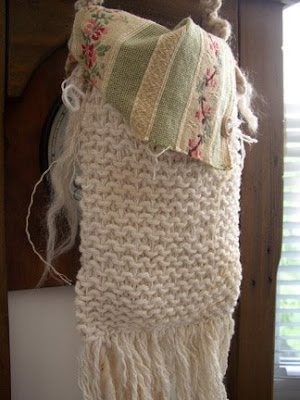
The fringe is just the leftover woven ends, which I purposely left long. I split them apart and also added a couple extra lengths of other yarns for some variety.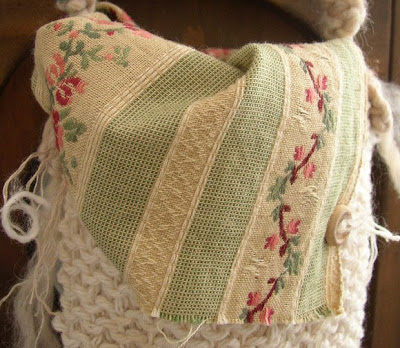
I've had this fabric in my stash for a while. I just artistically stuffed it into the bag body, letting it overlap in front and back, and left the ends raw. There's a little wood button in front here, and some little stitching holding it in place in the back.
The handle is hand crocheted, and attached on both sides.
I also "aged" the bag and yarn just a hair in a couple of spots with brushed on coffee. Yes, coffee! Just a little bit.
What I love is that all the ends are frayed and raw and just "out there".
I might add a bit more to it, but I had to take a break. It might be done, I'm not sure. I have to live with it a day or two to know for sure.
I'd like to resurrect my Etsy shop (which has been in a coma for some months now) and wanted to come up with something new to sell. Thing is, these might be a bit pricey, since they're labor intensive. The knitted and woven body is the thing that really takes the time. Hmmm. I may have a hard time parting with this anyway because it looks way too cute hanging on the post of my black iron bed. So we'll see. (And yes, I know I need to do better pictures before I put this in my shop! Why are good digital pictures so hard to do?)
The heat has gone back to wherever it came from and everyone's feeling way better around here. It'll come back, but for now sanity has returned. I'll try not to whine so much next time around.
All images are © Paula Pertile and may not be copied or used for any reason.
Blog: OUPblog (Login to Add to MyJacketFlap)
JacketFlap tags: God, Religion, Politics, Europe, A-Featured, Jenkins, Crisis, Christian, World History, Western Religion, Philip, Muslim, Islam, Continent, Add a tag
Philip Jenkins is Distinguished Professor of History and Religious Studies at Penn State University as well as the author of numerous books. His most recent title, God’s Continent: Christianity, Islam, and Europe’s Religious Crisis, offers a measured assessment of Europe’s religious future. Below Jenkins was kind enough to answer some questions for OUP.
OUP: This is the final book in your series on the future of Christianity, how does it differ from the other titles? (more…)




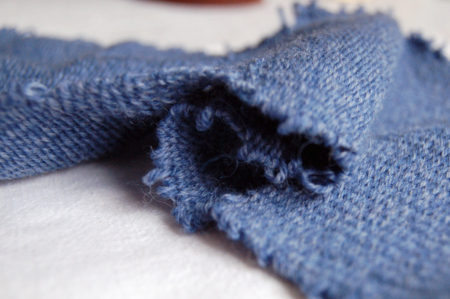
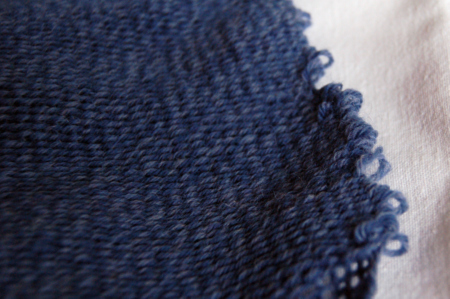
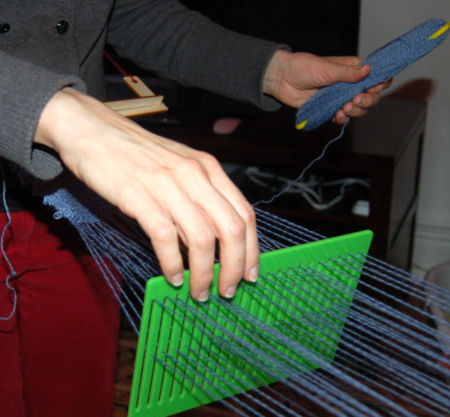
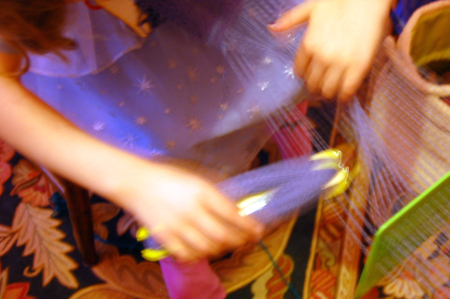
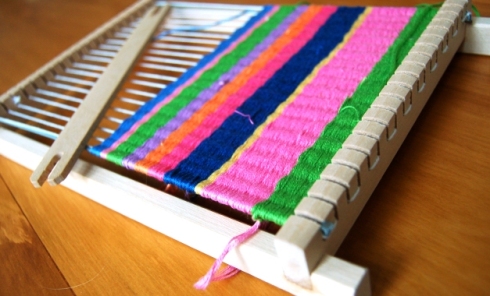
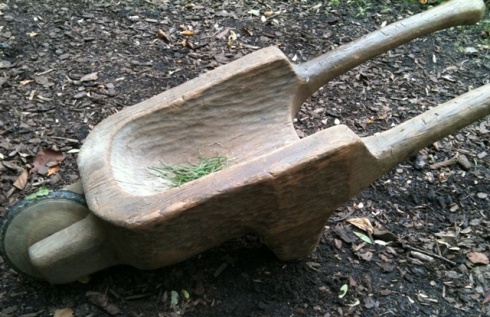

Oooh lovely! I really like the red bird.
I knit - so my eye was caught by the word "yarn". My creative side comes out there too. I can never use other people's patterns - although I might get inspiration from them - but a round or two of cables or yarn overs is good diversional therapy when the writing is not working.
Fascinating post! Thank you so much. I love tapestries and weaving, though I've never done any. I was so inspired by the story of the child weavers of Harania. Wonderful.
Wonderful! Absolutely wonderful!
Fascinating! What a wonderful skill to have acquired!
Fascinating! What a wonderful skill to have acquired!
Looks amazing!
This is almost my ideal post, Pauline! I like knitting but am MAD about tapestry theoretically, and as a spectator and used it a lot in my novel ITHAKA. The thing about Penelope weaving tapestries in exactly the same way you're doing makes me shiver!! Loved the Egyptian site and their work is amazing. I WISH that I could come to your exhibition....if you have postcards of your work I'd love to buy some...I am full of admiration for you!
Beautiful tapestries. I love to do patchwork and make bags and stuff for my children. I think my sewing informs my writing somehow ... it's useful to have another creative outlet.
Burgulars stole your LOOM? That must be a first!
Fascinating post - thank you!
Susan - they also stole our harmonium, David's saxophone, our old station clock, my clothes, our Coalport china - just about everything in those long-ago days when we didn't have much that we actually cared about. I, too, was incredulous at some of the things that went. I spent days staring at the screws, which were all that remained of my taken-apart loom, thinking, 'I must be imagining this.'
Adele - I've never likened myself to Penelope, but I shall from now on. I'm planning on getting cards printed, so will send you some [note to self]. Thanks for your kind words. Thanks, too, for the tweets.
Susan - they also stole our harmonium, David's saxophone, our old station clock, my clothes, our Coalport china - just about everything in those long-ago days when we didn't have much that we actually cared about. I, too, was incredulous at some of the things that went. I spent days staring at the screws, which were all that remained of my taken-apart loom, thinking, 'I must be imagining this.'
Adele - I've never likened myself to Penelope, but I shall from now on. I'm planning on getting cards printed, so will send you some [note to self]. Thanks for your kind words. Thanks, too, for the tweets.
Wonderful post, your work, woven and written is beautiful!
Pauline your work - written and wonven is beautiful!
Oh, what beautiful tapestries! And how exciting that your exhibition will be at The Gateway! I shall definitely come, Pauline, though unfortunately I can't make it to the private view.
In awe. x